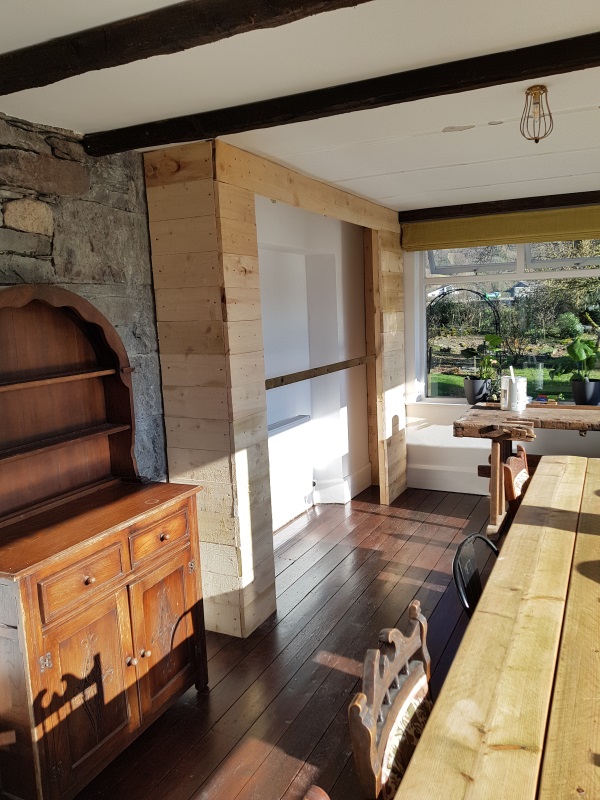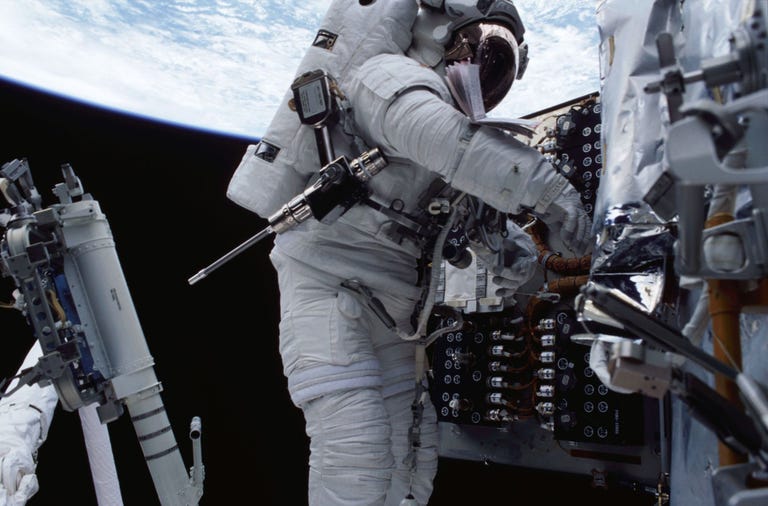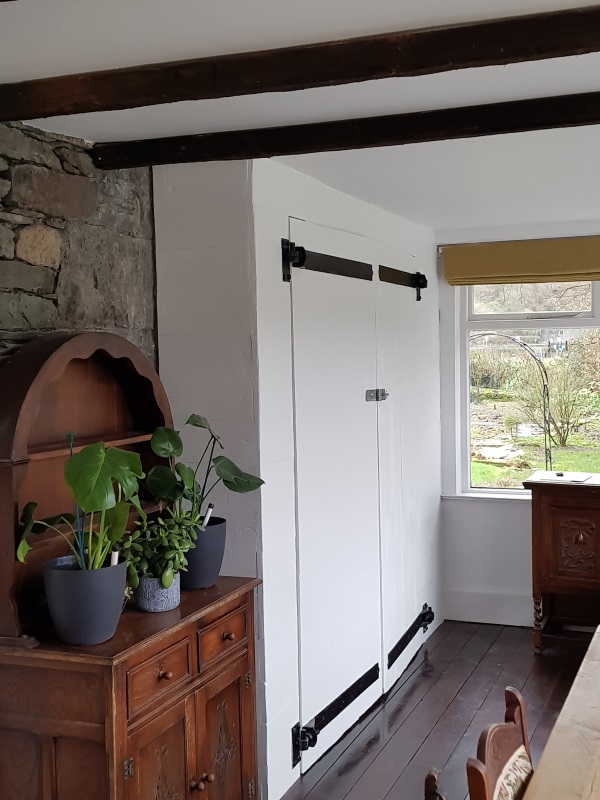It seems a very long while since I wrote a blog article – this extraordinarily varied job I now have has kept me busy with all kinds of practical things and left me with little time or head-space to blog. But here after a gap are some thoughts triggered by a recent task.
To cut a long story short, we had to build a cupboard, from scratch with struts and planks rather than an Ikea-style assembly kit. The cupboard was intended to replace a room full of racking and shelves which used to hold a collection of necessary linen and such like, plus a whole lot of dumped bits and pieces which were no longer needed and had to find a new home. (The old linen store room was being reworked for a different purpose, but that’s another story).

Now it struck me, as we worked away with timber purchased online and delivered direct to the house, using power tools of various kinds and (eventually) hefty tins of paint – which again we had not needed to go out and collect – that we are living in a fairly unique period for this kind of work. Back in the Bronze age, say three of four thousand years ago, things would have been very different. The same is true of classical, mediaeval, renaissance, and pretty much all other times right through to very recently. I wonder how many stories presuppose that the heroes of the story are able to simply turn their hands to whatever happens to be the next task on the list, regardless of the practical problems? I know I’ve read some like that.
For a start, I would probably not have been in a position to freely decide that the work needed doing. If I’d wanted timber, I would probably have had to fell and shape it myself, or negotiate with others to do this for me. All the woodworking would need to be done by hand, and even for a simple cupboard that takes a fair level of skill and practice. I wouldn’t have had easy access to several kinds of paint (primer/undercoat and topcoat, at minimum).

In short, a task which took two of us a couple of days to finish (plus waiting time in between paint coats) would have been a seriously long proposition, and one which would have had a much more debatable outcome.
That’s looking back. But if you look forward, to the prospect of making a cupboard in low or zero gravity, a whole set of different problems presents itself. Let’s suppose that I would have either procured some wood, or else used a three-d printer to turn out something similar enough that I could make it. Then I’d have to manoeuvre it into position. In low gravity, mass and weight mean different things – I would have the muscular strength to shift much larger weights than here on Earth, but their mass, and so their inertia, would be exactly the same, so getting the planks to stop moving might be an issue. Most of my Earth-based tools would not work, since most of them rely heavily on friction to have an effect. A saw works by relying on the fact that you can fix both the wood and yourself in place sufficiently well that the teeth cut through the wood fibres. Shift into micro-gravity, and what tends to happen is that you just can’t get enough opposing force at the blade edge to get anywhere.

Similarly for our dinky electric screwdriver. On Earth it’s great – you hold it steady, the screws turn round and work their way through the layers of wood. In microgravity, it’s hard to avoid you turning the opposite way to the screw. My layers of paint wouldn’t have a tendency to drip downwards – which would be very handy- but they’d also tend to disperse into little globules which would then go into all kinds of places you didn’t expect or want. The various space agencies have had to develop very specific – and very expensive – versions of everyday tools just so they can work in low Earth orbit reasonably well. Even so, tasks take much longer – in 2017 some 12 old batteries on the ISS were replaced with 6 new ones. The task took took separate spacewalks, the first of which lasted over 6 hours. Changing those 12 batteries took nearly as long as we took to build the whole cupboard. Fixing and making things in microgravity is hard work, and slow work.

3D-printed items using fake moon dust, or regolith (ESA)
Now, I’m quite convinced that as and when people will want to build a linen cupboard in low Earth orbit, or on the moon, or on an asteroid somewhere, they will be inventive enough to craft different kinds of tools which don’t make the same assumptions about gravity strength and direction that our current generation does. Maybe in a few decades I would simply download the cupboard template and print myself one, in whatever dimensions and colour scheme seemed good to me. Last year there was an interesting article explaining how ESA are testing the use of moon dust as the raw material for printers (at this stage it’s not actually dust from the moon, owing to a shortage of that, but the regolith they used has broadly the same properties). So you don’t send a bunch of tools and construction materials over to the mon, or Ceres, or Charon, or wherever – you send a printer with some pre-programmed templates, and you gather dust from your local environment.
For us, stuck with our 2019 toolset, there was a happy ending – the cupboard got finished quickly, and we can now move on to renovating the previous linen storeroom. And that would scarcely have been possible even fifty years ago, let alone all the previous years of mankind’s time here on Earth.


